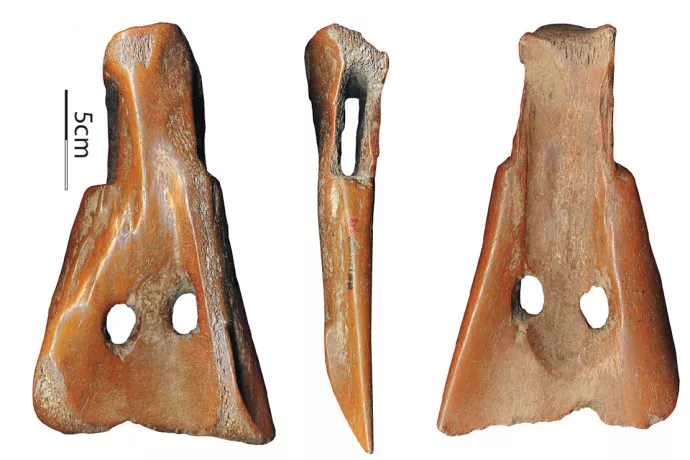
UTM archeologist studies how we shaped the technologies that also shaped us
Digging into the past – oftentimes quite literally – U of T Mississauga archeologist Liye Xie pieces together how ancient technological adaptations have underwritten almost all aspects of human life.
“We make technology, but technology also makes us,” Xie explains. “We’re technological species.”
Indeed, technology is all around us, having become integrated into our daily lives. When we think of technology, we often think of today’s digital tools, yet technology encompasses so much more. It’s the pencil we write with, the rake we use to clear our lawn or the spoon we use to eat.
Going deeper in time, technology can be something as simple as controlled fire.
“Technology to me, because of the time period I’m dealing with, is the sum of knowledge, techniques and skills that people employ to overcome challenges to reach a specific goal in the material world,” Xie says.
She developed an interest in ancient technology almost by accident. In graduate school she was at a dig in China expecting to see a lot of fascinating artifacts because the area was likely the site of the first legendary dynasty in China. Instead, what she found was mostly broken tools used by everyday individuals.
Seeing these day-to-day items, Xie started asking questions. What were the tools used for, who produced them, who lived here, who dealt with the daily work for elites? It prompted her to study ancient technologies to better understand the people who used them and their relationships.
“What I’m most excited about is pre-industrial urban construction technologies,” says Xie, who is currently focused on large Neolithic earthworks in the Lower Yangzi Basin and Middle Yellow River Valley.
The single most important construction technology in Chinese history is rammed earth, Xie says, which involves compacting a damp soil mixture into a frame. This technique was used to build modest dwellings, palaces, tombs, temples, and even parts of the Great Wall of China.
The underlying social connections associated with bringing people together to work at these ancient construction sites is what most interests Xie.
“Once you bring people together to do something together, you can reshape the relationship between subjects and between subjects and leaders,” Xie says. “Technology is applied to resolve a physical need to build some stuff, but in the meantime, what technology we use and how we use it can reshape human relationships and human’s relation to the environment.”
In the later Shang Dynasty, leaders moved their capitals, necessitating the construction of new political centres. Xie theorizes this allowed late Shang rulers to reshape society. Moving people away from where they lived, even determining who got to move, and putting them together to work, could have been a way to reform the political structure.
“It’s a hypothesis,” Xie stresses, adding there must have been some benefit to overcome the costs of moving a political centre.

Before diving into her study of ancient urban construction, Xie examined shovels made from the shoulder of wild water buffalos by a community in the lower Yangzi, going so far as to replicate them using bones from a cow to get a sense of how and why they were made. She says she discovered the shovels were made using bones from older water buffalos, which were thicker and sturdier. That significantly narrowed the material available.
Xie concluded they used older water buffalos because it was part of their social identity and they didn’t question it, which ultimately constrained their choices.
Understanding the underlying social and political relationship with technologies from the past helps provide insight into today’s world, where we still use tools to resolve daily challenges.
“Our plans and understanding of the world are always structured by the technologies we have,” Xie says, noting we are born into a world where the technology we create can reshape our relationship with others and with the material world.
This story first appeared in the Spring 2020 issue of M Magazine
